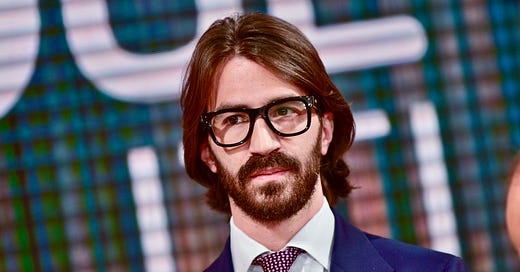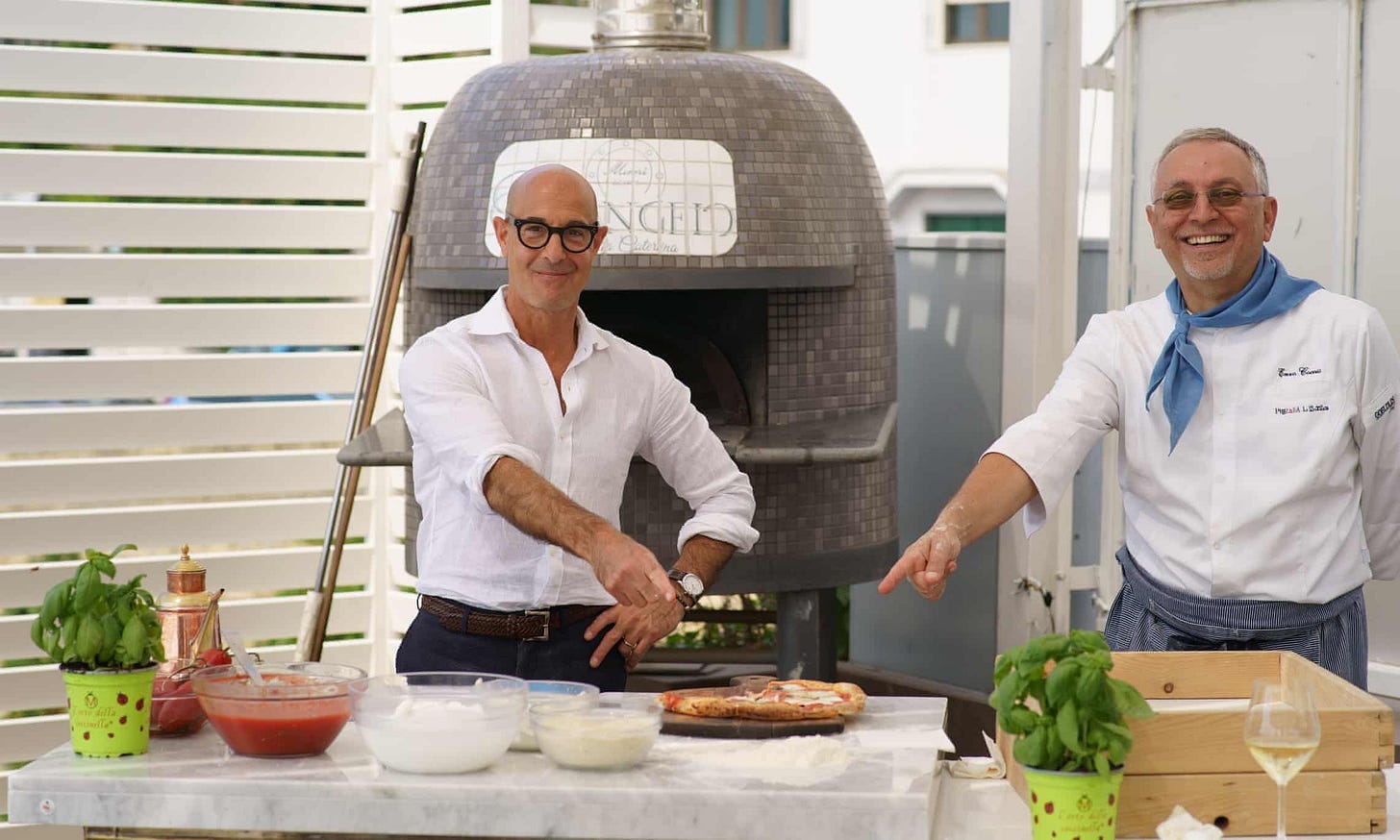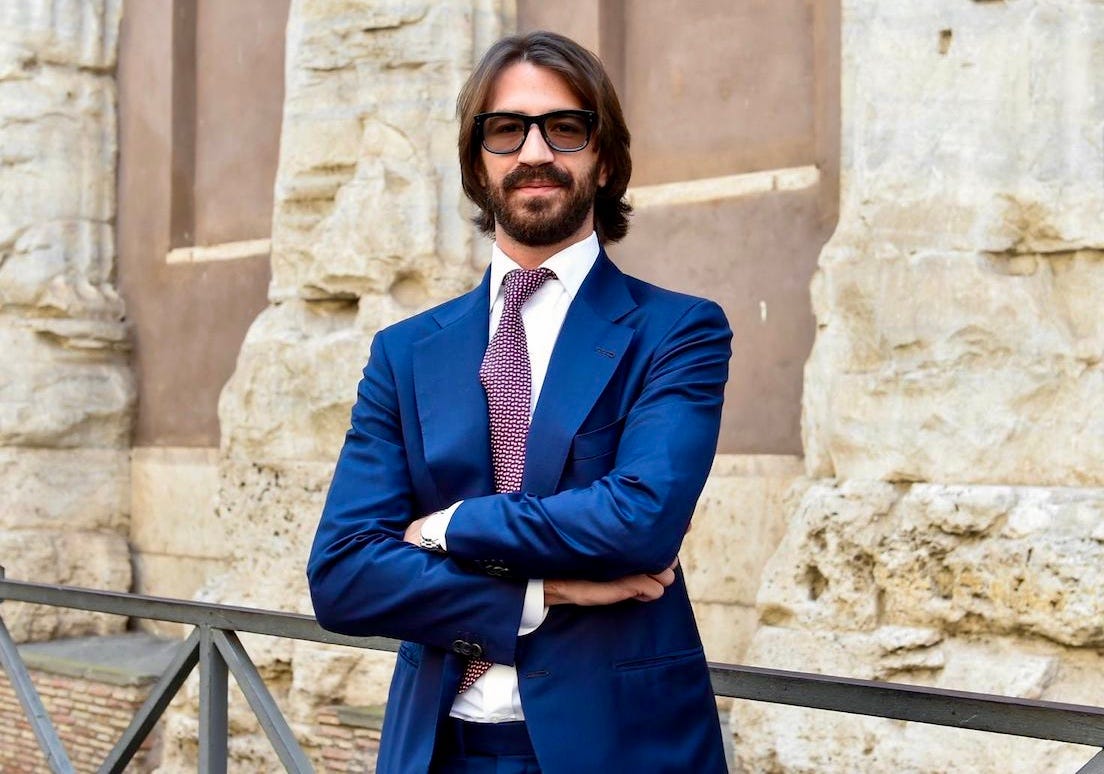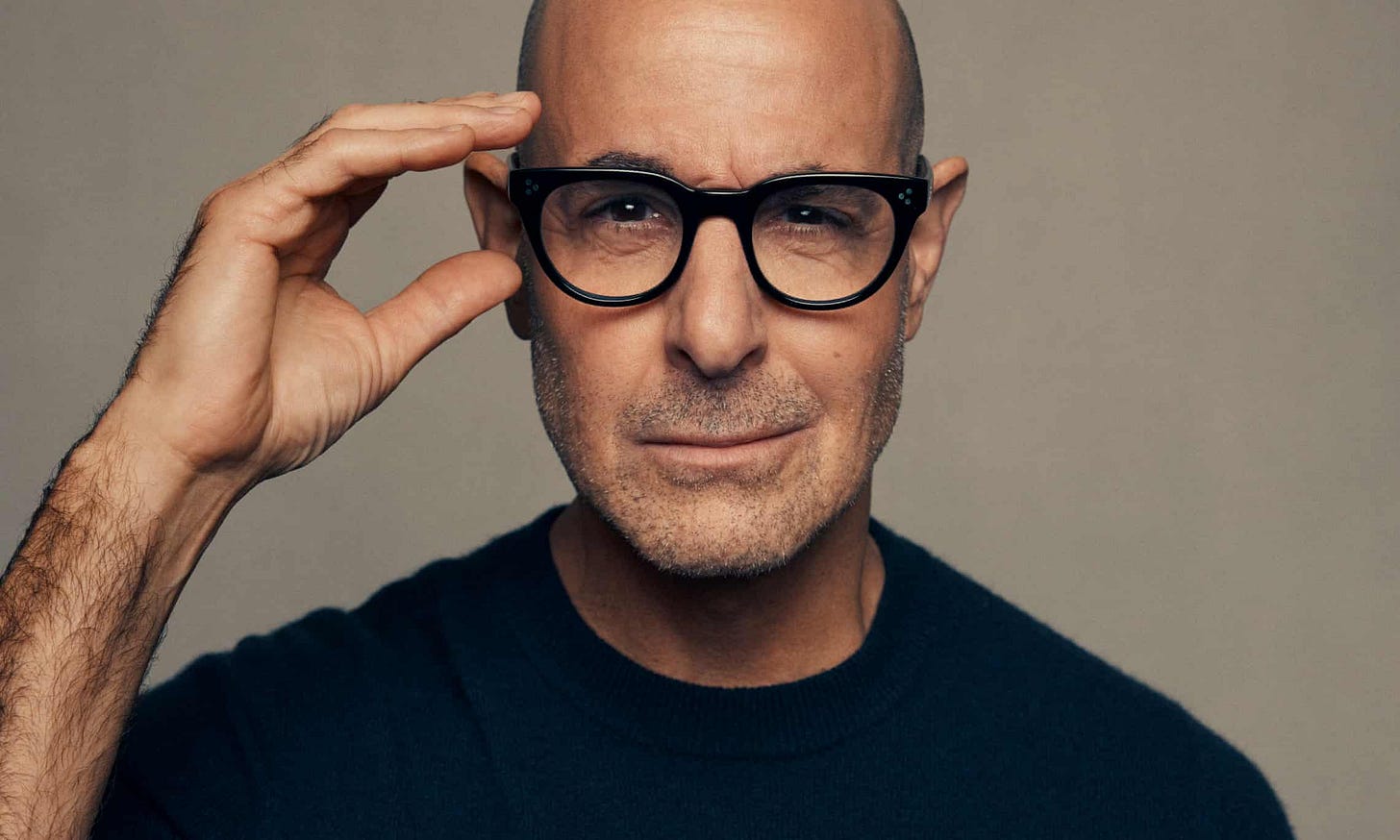Cosa farà il ragazzo più ricco d’Italia con il Twiga?
Entrepreneur Briatore sells the Twiga to the richest young man in Italy
Se trovi anche tu che Delvecchino (nomignolo affibbiatogli dagli invidiosi del jet set), il più ricco, esposto e mediatico rampollo del capitale all’italiana, ricordi un po’ il Sandokan di Kabir Bedi, allora lo vedi quante cosa abbiamo in comune?
Vuol dire che L’Italia fa qualcosa alle persone fa sicuramente per te: iscriviti
Quando leggerete la newsletter di oggi Delvecchio jr avrà senz’altro impiegato in altre attività le quote della fortuna lasciatagli dal padre, noi però fermiamoci al Twiga.
A prima vista, e semplificando in modo brutale, potrei dirti che Leonardo Del Vecchio jr, “il ragazzo più ricco d’Italia”, si è comprato da Flavio Briatore tre stabilimenti balneari e un immobile pagandoli parecchio. Secondo fonti di mercato: 50 milioni di euro.
Ma come spesso accade con l’economia la realtà è più complessa. Mi spiego meglio.
Chi compra.
A comprare è la Triple Sea Food, società controllata dalla holding di investimento LMDV di Leonardo Maria Del Vecchio, 29 anni, figlio del fondatore di Luxottica Leonardo Del Vecchio (senza Maria).
Dall’alto del suo patrimonio personale stimato in 4,7 miliardi di euro, Leonardo Maria controllava già i ristoranti Vesta a Milano, Forte dei Marmi e Paraggi, più Casa Fiori Chiari e Trattoria del Ciumbia sempre a Milano. Con i 50 milioni circa per Twiga, la LMDV raggiunge i 250 milioni di euro investiti nel settore ristorazione e ospitalità.
Chi vende.
A cedere il bagno più famoso d’Italia, il luogo dell’esserci, del farsi vedere, dello status, dell’edonismo social, delle stories su Instagram, della caccia ai like, insomma Twiga, è il Gruppo Majestas di Flavio Briatore e Francesco Costa.
Restano nelle loro mani le licenze per Cova Monte Carlo e Cipriani Monte Carlo, oltre a Crazy Pizza, catena di pizzerie che, una volta spogliata dagli eccessi di definizioni altisonanti (“luxury dining, luxury pizza…”) resta una catena di pizzerie con vari locali in Italia e non.
Dove vuole arrivare Leonardo Del Vecchio jr?
Fin qui la notizia. Ma dove vuole arrivare Leonardo Maria Del Vecchio con questa raffica di investimenti milionari?
Sta costruendo un impero di ristoranti esclusivi nelle mete turistiche più frequentate? O sogna una rete internazionale di locali che dall'Italia si espanda in tutto il mondo?
Probabilmente punta a fare tutto questo insieme. E, cosa non da poco, come ha notato Massimiliano Tonelli su CiboToday, ha le risorse per riuscirci.
Parliamo di una potenza di fuoco economica praticamente senza limiti con la capacità di attendere che ogni investimento maturi nel tempo. Quando puoi permetterti di giocare su tutti i tavoli, le possibilità diventano infinite.
Quanto costa mangiare al Twiga?
Tutto questo parlare del Twiga ti ha stuzzicato? La prossima estate vuoi regalarti una giornata da riccastro sotto una tenda del bagno più famoso d’Italia, così –toccata e fuga– giusto per provare l’effetto che fa?
Tranquillo, il tuo sogno non costerà (molto) di più dopo il cambio di proprietà. Ma solo perché i prezzi erano già altini.
Tu e il tuo partner dovevate mettere in conto 700 euro per il pacchetto pranzo, cena, aperitivo e tenda araba sulla spiaggia.
Nel dettaglio: 400 euro per i pasti (bevande escluse), più 300 per la tenda. Un singolo pasto -antipasto, primo, secondo e dolce- si aggira sui 200 euro a persona, a cui aggiungere 5 euro di coperto e le bevande.
Cosa c’entra Stanley Tucci con l’Italia
È tempo che ti parli di Stanley Tucci.
Che c’entra l’attore di Spotlight, The Terminal, Hunger Games e Il diavolo veste Prada con l’Italia?
In vista del tour che nel 2025 lo porterà in Italia, Re Carlo d’Inghilterra ha chiesto proprio a lui di organizzare una cena nella residenza di Highgrove. Il motivo? Celebrare i legami tra Italia e Regno Unito.
Il protagonista di tanti film curerà il menu (anche se non cucinerà personalmente), ma la domanda resta: cosa c’entra con una cena tanto simbolica Stanley Tucci, che è nato a Peekskill, New York?
C’entra eccome. Non puoi capire quanti italiani - gli stessi che storcerebbero il naso all'idea di chiedere consigli culinari a uno straniero - consultano il profilo Instagram dell’attore per non finire nei ristoranti sbagliati.
E non parliamo degli americani che seguono le sue dritte più della Guida Michelin.
Il protagonista di Amabili resti ha sempre avuto un legame speciale con l’Italia, già evidente nel 1996 grazie a Big Night. Forse non te lo ricordi ma è il film, da lui diretto e interpretato, in cui veste i panni di un cuoco italo-americano proprietario di un ristorante sulla East Coast.
Durante la pandemia Tucci ha ideato e sviluppato su Instagram una web-serie in cui compariva nelle vesti di bartender intento nella preparazione di alcuni cocktail. Come un impeccabile Negroni, in un video all’epoca diventato virale.
Searching for Italy: lettera d’amore all’Italia
Da lì è nata Searching for Italy, la serie prodotta dalla CNN che ha toccato Napoli, Roma, Bologna, Firenze e la Sicilia, conquistando tutti. Non è un caso che dopo appena due episodi sia stata rinnovata per una seconda stagione.
Il New Yorker ha applicato il suo stile elegante al racconto di un piatto presentato nella serie: gli spaghetti alla Nerano, ricetta campana semplice alla quale non si resiste, con zucchine fritte, molto basilico e Provolone del Monaco.
A Marina del Cantone, allo Scoglio da Tommaso, ristorante consigliato durante Searching for Italy, i turisti americani hanno iniziato a contendersi i tavoli per quegli spaghetti visti in TV.
Immagina la scena: clienti che si scambiano occhiate d’intesa, si riconoscono e mormorano un nome: “Stanley Tucci”. E ci sono anche quelli che, con aria supplichevole, si rivolgono ai camerieri: “Mi porti quello che ha ordinato Stanley Tucci”.
Quello che era “solo” un attore di successo è diventato oggi una delle voci internazionali più autorevoli sulla cucina italiana, oltre che un foodie sgamato, affascinante, colto, stilosissimo.
“Attenzione”, ha scritto il Guardian rivolto alle sue lettrici: “Tucci è così affascinante che rischi di restare incinta attraverso lo schermo mentre ti guida nella terra dei suoi antenati”.
Cosa ho mangiato in un anno
Nel suo nuovo libro, “What I Ate in One Year”, non mancano retroscena gustosi. Come la critica al catering di "Conclave", girato a Roma con Ralph Fiennes: "Ho già scritto dello stato pietoso del catering cinematografico italiano ma confermo tutto".
In cima alle sue preferenze c'è una trattoria romana: Pommidoro dal 1890 a San Lorenzo, che dopo il suo endorsement si prepara alle code natalizie per la carbonara divorata da Tucci in un video sul profilo Instagram del locale.
In una serie di interviste date ai quotidiani inglesi per promuovere il libro, l’attore e regista ha parlato apertamente della sua battaglia contro il cancro alla lingua.
Un'esperienza dura, debilitante: "Pensavo di avere fame", ha raccontato, "ma ogni sapore in bocca era orribile".
Curarsi non è stato semplice, per settimane Tucci non riusciva neanche a salire le scale. Ma se oggi fatica ancora a deglutire, la malattia è ormai un ricordo.
Per questa settimana ho finito. Se sei un fan di Stanley Tucci, e voglio dire, chi non lo è, ricordati di condividere la newsletter con chi la pensa come noi.
Ti do appuntamento a martedì prossimo, passa una buona domenica.
If you, too, think that Delvecchino (a nickname given to him by envious members of the jet set), the richest, most high-profile and media-savvy heir of Italian capitalism, resembles Kabir Bedi’s Sandokan, then look how much we already have in common.
That means L’Italia fa qualcosa alle persone is definitely for you: subscribe.
By the time you read today’s newsletter, LMDV —as Leonardo Maria Del Vecchio styles himself— will surely have directed other parts of the vast fortune left to him by his father into new ventures. But for now, let’s focus on the Twiga.
Note: “Sandokan” refers to a fictional pirate hero from an Italian TV series popular in the 1970s, played by Indian actor Kabir Bedi. The comparison here evokes a bold and adventurous persona.
What is “Italy’s richest young man” doing with the Twiga?
What is Leonardo Del Vecchio Jr., “Italy’s richest young man,” planning to do with the Twiga he bought from Flavio Briatore?
At first glance —and to brutally simplify— I could tell you that Leonardo Del Vecchio Jr. purchased three beach clubs and a property from Flavio Briatore for a substantial sum. According to market sources: €50 million.
But as is often the case in economics, the reality is more complex. Let me explain.
The buyer.
The buyer is Triple Sea Food, a company controlled by Leonardo Maria Del Vecchio’s investment holding, LMDV. At 29 years old, Leonardo Maria is the son of Leonardo Del Vecchio (the founder of Luxottica, without the “Maria”) and boasts a personal fortune estimated at €4.7 billion.
He already owns the Vesta restaurants in Milan, Forte dei Marmi, and Paraggi, as well as Casa Fiori Chiari and Trattoria del Ciumbia, both in Milan. With the roughly €50 million acquisition of Twiga, LMDV has now invested €250 million in the food and hospitality sector.
The seller.
The Twiga brand —synonymous with exclusivity, social status, Instagram stories, and a lifestyle designed to gather likes— is being sold by Majestas Group, owned by Flavio Briatore and Francesco Costa. Twiga represents Italy’s most famous and glamorous beach clubs.
Briatore and Costa, however, are holding onto licenses for Cova Monte Carlo and Cipriani Monte Carlo, as well as Crazy Pizza—a pizzeria chain that, when stripped of lofty marketing terms like “luxury dining” or “luxury pizza,” remains just a chain of pizzerias with locations in Italy and beyond.
The bigger picture.
So far, these are the facts. But where is Leonardo Maria Del Vecchio heading with this series of multimillion-euro investments?
Is he building an empire of exclusive restaurants in the most popular tourist destinations? Or is he envisioning an international network of venues that expands from Italy to the rest of the world?
Chances are, he’s aiming for all of the above. And, as noted by Massimiliano Tonelli on CiboToday (in italian), he has the resources to pull it off.
This is an economic powerhouse with virtually unlimited capital, allowing for the patience to wait until each investment pays off. When you can afford to play on every table, your possibilities become infinite.
Fancy a day at the Twiga?
Has all this talk of Twiga piqued your curiosity? Planning to treat yourself next summer to a day of luxury under one of the beach club’s iconic tents, just to see what it’s like? Don’t worry—your dream won’t cost much more after the ownership change. But that’s only because prices were already sky-high.
For you and your partner, expect to spend €700 for the full package: lunch, dinner, an aperitif, and an Arabian tent on the beach.
Here’s the breakdown: €400 for the meals (excluding drinks) and €300 for the tent. A single meal —starter, main course, dessert— costs around €200 per person, plus a €5 cover charge and, of course, beverages.
Let’s talk about Stanley Tucci.
What does the actor from Spotlight, The Terminal, The Hunger Games, and The Devil Wears Prada have to do with Italy?
Quite a bit, actually. Ahead of his 2025 tour of Italy, King Charles of England asked Tucci to organize a dinner at Highgrove, his royal residence. The purpose? To celebrate the ties between Italy and the United Kingdom.
Tucci will design the menu (though he won’t personally cook), but the question remains: what does a dinner as symbolic as this one have to do with Stanley Tucci, a man born in Peekskill, New York?
Turns out, a lot. You wouldn’t believe how many Italians —the same ones who would scoff at taking culinary advice from a foreigner— turn to Tucci’s Instagram profile to avoid ending up in the wrong restaurants.
And as for Americans? They trust his recommendations more than the Michelin Guide itself.
The actor from The Lovely Bones has always had a special bond with Italy, one that was already evident back in 1996 with Big Night. You might not remember it, but in that film —which he both directed and starred in— he plays an Italian-American chef running a restaurant on the East Coast.
During the pandemic, Tucci created an Instagram web series in which he appeared as a bartender, crafting cocktails. One video of him making a flawless Negroni went viral at the time.
Searching for Italy: A love letter
That web series led to Searching for Italy, the CNN-produced show that visited Naples, Rome, Bologna, Florence, and Sicily, captivating audiences worldwide. It’s no surprise that after just two episodes, the series was renewed for a second season.
The New Yorker applied his signature elegance to presenting a dish featured on the show: spaghetti alla Nerano, a simple yet irresistible recipe from Campania made with fried zucchini, plenty of basil, and Provolone del Monaco cheese.
At Marina del Cantone’s Lo Scoglio da Tommaso –a restaurant featured on Searching for Italy– American tourists began competing for tables to try those very spaghetti they’d seen on TV.
Picture the scene: customers exchanging knowing glances, recognizing one another, and whispering a single name: “Stanley Tucci.” Some even turn to the waiters with pleading expressions, saying, “I’ll have what Stanley Tucci ordered.”
What was once “just” a successful actor has now become one of the most influential international voices on Italian cuisine. Tucci is a savvy foodie—charismatic, cultured, and impossibly stylish.
“Beware,” wrote The Guardian, “Tucci is so charming you might find yourself getting pregnant through the screen as he guides you through the land of his ancestors.”
What I Ate in One Year
In his latest book, What I Ate in One Year, Tucci offers some delicious insights, including his critique of the catering on Conclave, filmed in Rome with Ralph Fiennes: “I’ve already written about the sorry state of Italian film-set catering, and I stand by it.”
Topping his list of favorites is a Roman trattoria: Pommidoro dal 1890 in San Lorenzo. After Tucci’s endorsement, the restaurant is now bracing for holiday-season crowds eager to try the carbonara he devoured in a video shared on the trattoria’s Instagram account.
In a series of interviews with British newspapers to promote the book, Tucci also opened up about his battle with tongue cancer.
It was a harsh and debilitating experience: “I thought I was hungry,” he recounted, “but everything in my mouth tasted horrible.”
Recovery wasn’t easy; for weeks, Tucci couldn’t even climb stairs. Although swallowing remains a challenge, the illness is now just a memory.
I’m done for this week. If you're a fan of Stanley Tucci —and honestly, who isn't— remember to share the newsletter with like-minded folks
I’ll see you next Tuesday—have a great Sunday!








